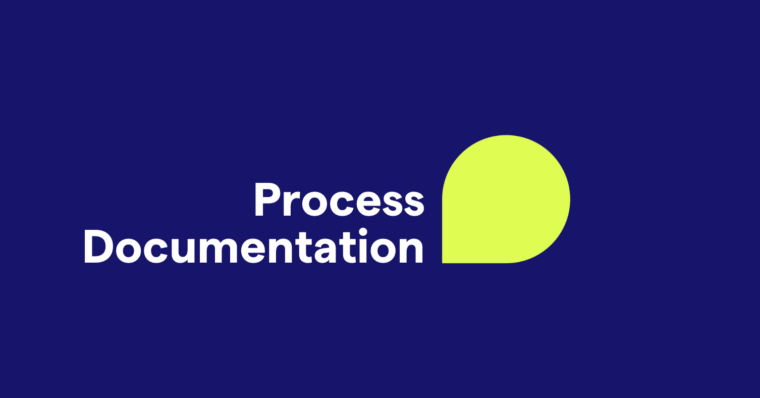
Taking down meeting minutes may feel mundane or critical, depending on what’s on the agenda, but it’s always important that your writing is clear and accurate. However you feel about your role as transcriber, recording effective meeting minutes is a long-term essential for any organization with meetings.
In this article, we’ll discuss how to write meeting minutes like a pro so everyone involved clearly understands what took place during the meeting just by reading the minutes. Here are some tips and templates to make writing meeting minutes a breeze.
What are meeting minutes?
Meeting minutes are the written record of a meeting or hearing. Minutes are usually structured and formal so that they can be shared after the meeting and serve as historical documents in the future.
For those who could not attend the meeting, minutes bring them up to speed. Minutes also offer accountability to action items that were discussed during the meeting.
More importantly, if an organization enters into any sort of legal situation, minutes serve as an official record proving due diligence, ethics, and bylaw compliance.
Who takes meeting minutes?
The secretary most often takes meeting minutes. Nonprofits, government entities, schools, public companies, and trade unions are usually required to record official meeting minutes. However, many other companies also use meeting minutes to maintain an official record.
How to write meeting minutes
The style and content of meeting minutes will vary depending on the organization and how it’s structured. Regardless, you should always include the basics, like date, time, and participants. But many organizations will also benefit from having other, optional items like supplementary documents and action items. Read on to find out what to include in your meeting minutes.
8 basic elements of meeting minutes
These are the essential items to include in your meeting minutes:
1 Date
2 Time
3 Location
4 Participants
5 Topics discussed
6 Motions
7 Voting outcomes
8 Next meeting date and place
What else should meeting minutes include?
Most organizations will add at least one or two other elements in their meeting notes. Beyond the essentials, your meeting notes can include and be structured in whatever way best fits your organization’s needs.
Here are some custom elements you can include in your meeting minutes:
- Supplementary documents
- Action items
- Purpose of meeting
- Items to be discussed next time
- Project status updates and voting results
- Next steps, like research and follow-ups
- A section to define attendees who are guests, nonvoters, or speakers
- Corrections or amendments to previous meeting minutes
5 tips for writing meeting minutes
Once the meeting has adjourned, use your notes to write and edit your minutes, and then share them. It helps to write out your meeting minutes as soon as the meeting concludes so you don’t miss anything.
1 Be consistent
It helps to use a template every time you take meeting minutes. That way, they’re all laid out the same way, and you won’t have to waste time adding headings and bullet points. This is useful later when other people in the organization need to reference them. Some organizations even put their agenda and expected attendees on the meeting notes for efficiency.
2 Record it
When you start in your secretary role, you might have trouble keeping up with note-taking. If you’re experiencing this, consider recording the meeting. You can do this with any smartphone, audio recording device, or camera. Later, you can use an artificial intelligence transcription service or just listen back to the recording as a refresher when needed. Before recording, though, be sure to let your attendees know they are being recorded.
3 Make your notes viewable during the meeting
Sometimes, meetings are collaborative. This can sometimes feel chaotic and make it difficult to keep track of everything. Making the notes viewable on a projector or sharing your screen or document during meetings allows your teammates to contribute to them.
4 Summarize
When you’re writing meeting notes, summarize. You should document as much information as possible, but don’t write everything verbatim. It’s not necessary to record everything that was said during the meeting notes. You also might have difficulty keeping up if you try to write the entire conversation word-for-word. Simplify and clarify what happened during the meeting.
5 Label comments with initials
If multiple people in the meeting have input on a matter, it can help to use attendees’ initials to indicate who contributed what. You can also use initials to indicate who will be in charge of the next steps. This shorthand technique is an efficient way to clarify a multiperson conversation.
5 templates for meeting minutes
1 Board meeting minutes
Call to order
Facilitated by the chair of the board.
[Chair of the board’s name] called to order the regular meeting of [your organization] at [time of meeting] on [date of meeting] in [location of meeting].
Attendance
Facilitated by the secretary.
Secretary conducted roll call. The following persons were present:
- [Name]
- [Name]
- [Name]
The following persons were absent:
- [Name]
- [Name]
- [Name]
Approval of minutes
[Secretary’s name] read the minutes from the last meeting. The minutes were approved.
Open issues
- [Issue #1]
- [Issue #2]
- [Issue #3]
New business
- [New business item #1]
- [New business item #2]
- [New business item #3]
Adjournment
[Meeting facilitator’s name] adjourned the meeting at [time meeting ended].
Submission and approval of minutes
Minutes submitted by: [Secretary’s name]
Minutes approved by: [Board chair or meeting facilitator’s name]
2 Informal meeting template
Call to order
A meeting of [organization name] was held at [location of meeting] on [date of meeting].
Attendees
Voting members in attendance included:
- [Attendee #1]
- [Attendee #2]
- [Attendee #3]
Guests in attendance included:
- [Guest #1]
- [Guest #2]
- [Guest #3]
Approval of minutes
A motion to approve the minutes of previous [date of previous meeting] was made by [secretary’s name] and seconded by [seconder’s name].
Reports
- [Report name] was presented by [name of presenter]
- [Report name] was presented by [name of presenter]
Main motions
- [Name of motion] moved by [name of mover] and seconded by [name of seconders]. The motion [carried or failed] with [number of votes] in favor and [number of votes] against.
Adjournment
[Meeting facilitator’s name] adjourned meeting at [time of adjournment].
3 Public hearing meeting template
Meeting date: [Meeting date]
Meeting time: [Meeting time]
Secretary: [Secretary’s name]
Introduction
[Meeting conductor’s name] introduced the meeting:
- [Talking points]
Roll call
Members present:
- [Attendees]
Motion #1
| Motion #1 | Objective | Allotted time | Presenter |
| [Motion topic] | [Outcome goals] | [Time allotted] | [Presenter initials or name] |
Comments:
- [Initials or name of commenter] [comment] [label such as: idea, action item, or conclusion]
Motion #2
| Motion #2 | Objective | Allotted time | Presenter |
| [Motion topic] | [Outcome goals] | [Time allotted] | [Presenter initials or name] |
Comments:
- [Initials or name of commenter] [comment] [label such as: idea, action item, or conclusion]
Ideas
- [Idea]
Next steps
- [Next step]
Conclusions
- [Conclusion]
4 Client meeting notes
Project: [Project name]
Attendees: [Attendees]
Date and time: [Date and time]
Agenda
- [Topic to discuss]
- [Objective]
- [Key points]
Notes
[Any additional important information discussed during the meeting]
Outcomes
[Key decisions]
Action items
- [Name of person responsible] [Next step]
- [Name of person responsible] [Next step]
5 Project management minutes
Date and time: [Date and time]
Present: [Attendees]
Absent: [Project members not in attendance]
Location: [Place of meeting]
Project: [Name of project]
Topics
- Update from [team]
- Progress on [project]
- Results from previous week
Meeting minutes FAQs
What are meeting minutes?
Meeting minutes document what happened during a meeting. They are often shared within an organization after a meeting and serve as a reference document in the future.
Why are meeting minutes important?
- Create a historical record
- Show progress over time
- Offer legal protection for the organization
- Adhere to local bylaws
- Explain why an organization made a decision
- Serve as a reminder of assignments or projects
- Act as evidence of deadlines
- Inform members who were unable to attend
What should meeting minutes include?
- Date
- Time
- Location
- Participants
- Topics discussed
- Motions
- Voting outcomes
- Next meeting date and place






